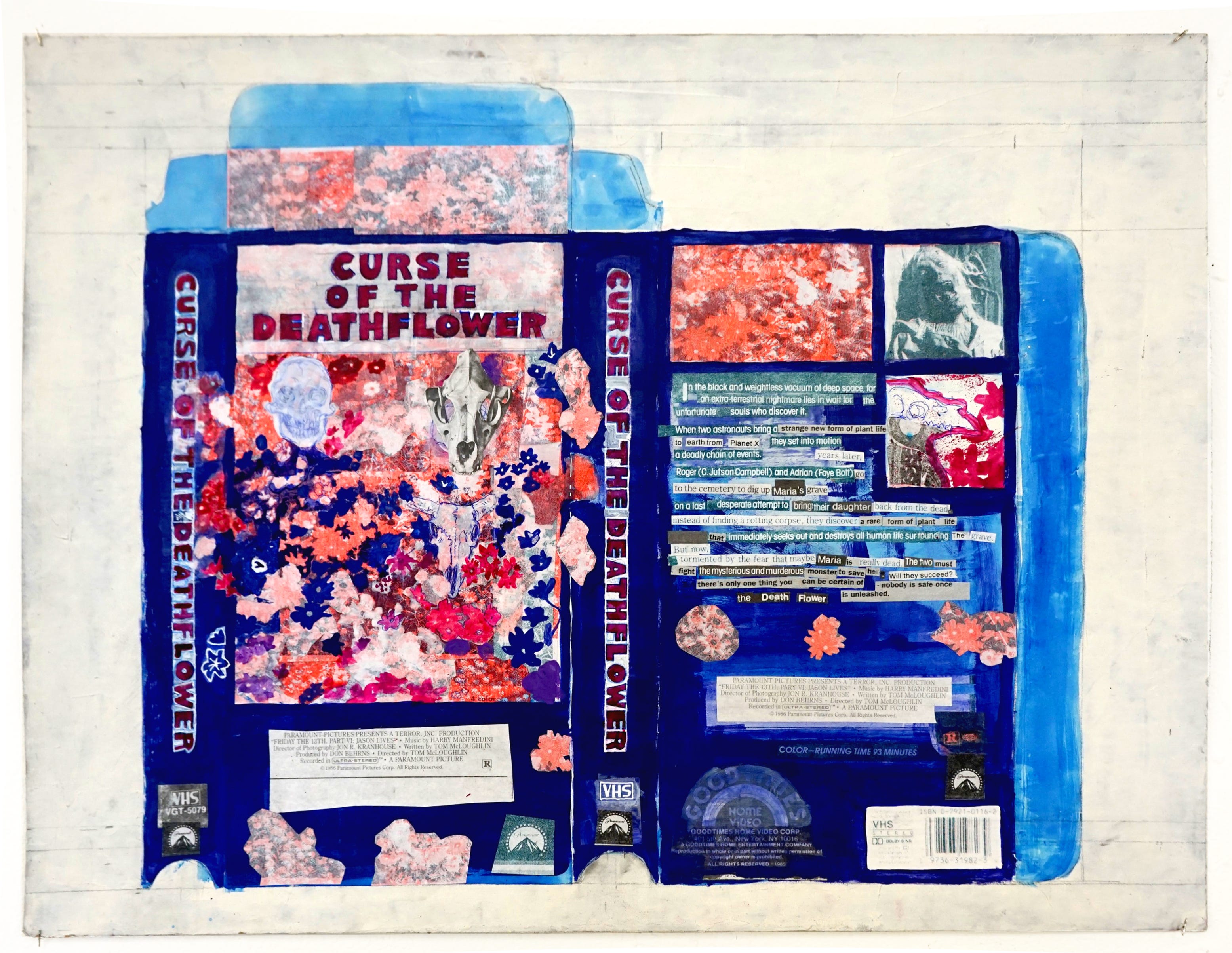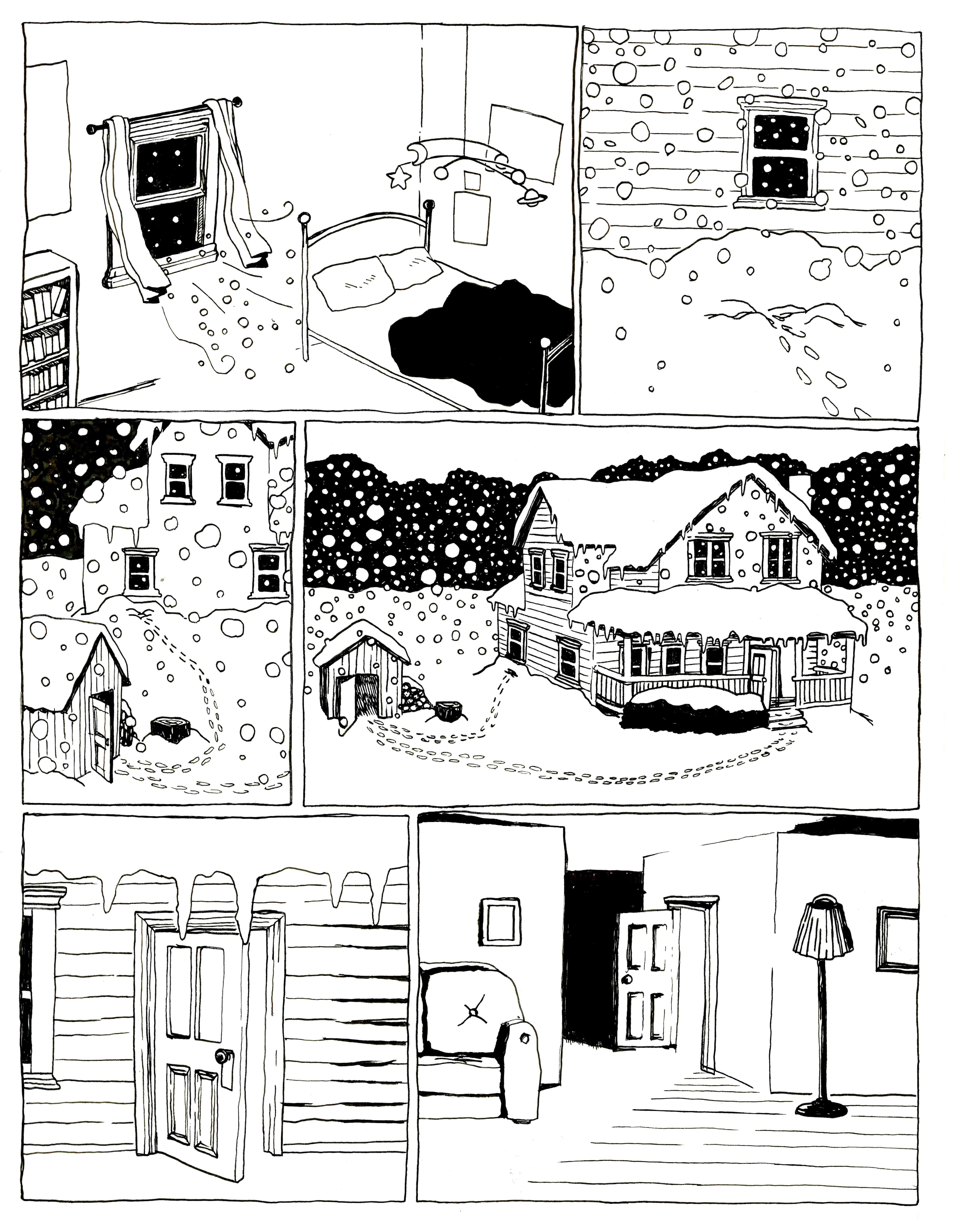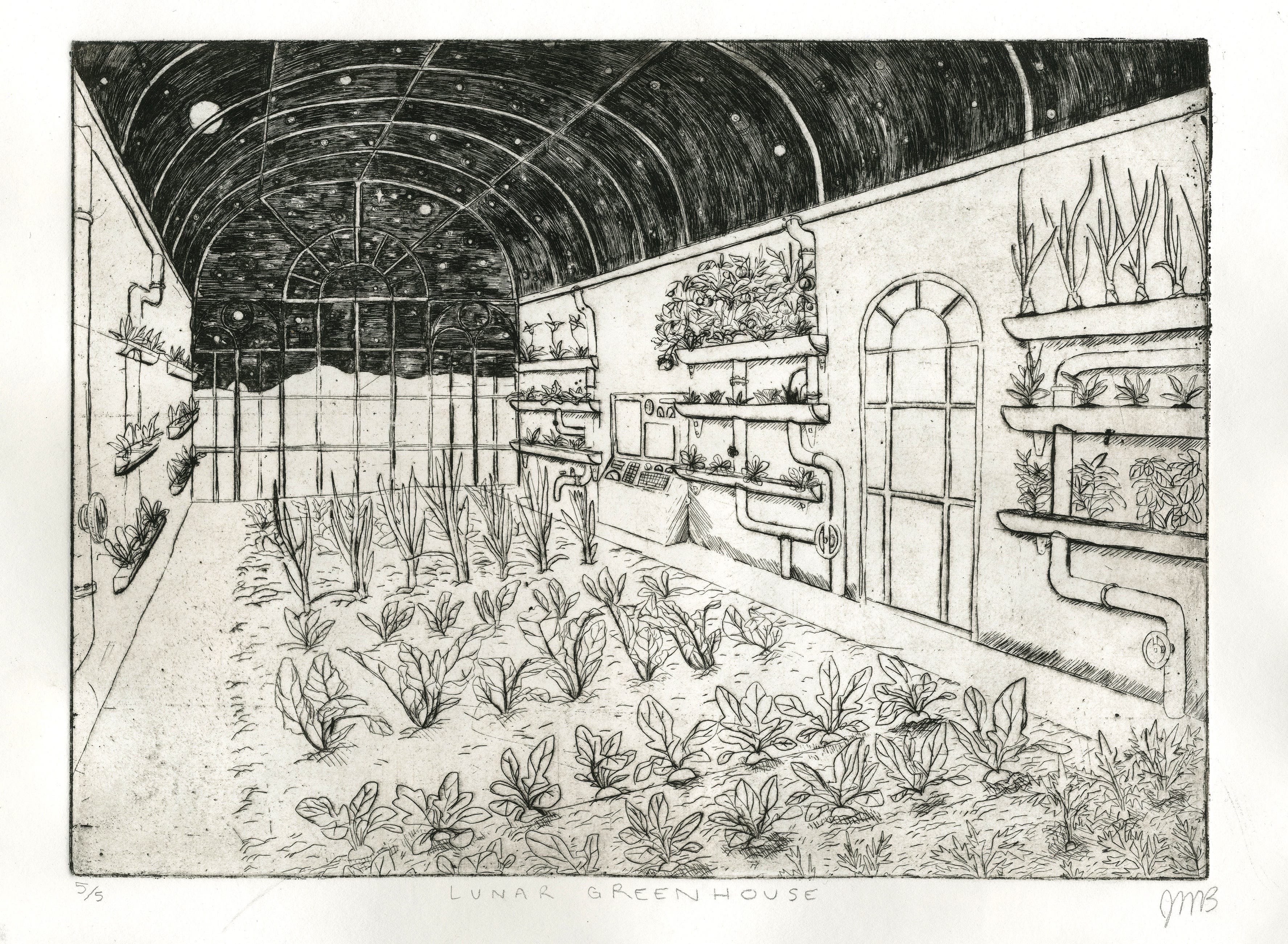Undergraduate Student, Oberlin College
Studio Art
Title of Exhibition: Night Movies
I’m interested in dreams, flowers, the occult, the aesthetics of VHS tapes, horror, and science-fiction movies; I appreciate art that gives an imagined thing like a gift to the viewer and I make comics in order to do that.

Artist Statement
I appreciate art that gives an imagined thing like a gift to the viewer and I make comics in order to do that. My work often involves narratives that are imaginative or fantastic. There is some unknown and beautiful aspect shared by irrational things like the occult, fiction, the dream, imagination, a playful drawing, stories, comic books, a science fiction movie. I think there is a common force present in all of these things, present in imagined ideas, that has a lot of love and power. I want to tap into that feeling.
My work primarily involves processes of drawing, painting and printmaking. Currently I am focused on two major projects, a comic titled Night Movies, and a zine called The Garden of Orobas.


Night Movies
Night Movies draws from the aesthetics of 70s-80s horror and science fiction movies, and VHS tapes of that period. The story follows Maggie, a high school girl with a paranoid fear of being murdered. She compulsively watches horror movies, takes karate, and researches serial killers in the hopes of defending herself against the horrors she believes will eventually threaten her. Under the backdrop of a suburban environment pervaded by unknown sinister forces, she falls in love and her fears begin to unfold as the plot of a slasher movie.
Why Comics?
The process of creating comics is a long and slow one which I enjoy deeply. Comics requires a certain type of organization and habit-forming.
Comics allows me to tell stories in a similar way to movies, but without the prohibitively expensive and hyper-complicated process of production, and with the inclusion of the hand.
Keeping my hand present and visible in the work is important to me. Drawing allows me to keep my hand present while I translate and appropriate narrative devices and aesthetics from movies into comics.

Why Horror?
There are a number of reasons why I think Horror is an especially interesting and valuable genre, and I hope to include more of those angles as this story progresses.
The comic deals with vulnerability & its relationship to both love and violence. Horror movies, and particularly slasher movies are about the body. These films have been justifiably critiqued in the past for their treatment of sex, and I think that the Horror genre has much to offer us in exploring the relationship between bodily vulnerability, love, and violence.
Judith Butler writes, “I am referring to violence, vulnerability, and mourning, but there is a more general conception of the human with which I am trying to work here, one in which we are, from the start, given over to the other, one in which we are, from the start, even prior to individuation itself and, by virtue of bodily requirements, given over to some set of primary others: this conception means that we are vulnerable to those we are too young to know and to judge and, hence, vulnerable to violence; but also vulnerable to another range of touch, a range that includes the eradication of our being at the one end, and the physical support for our lives at the other.”
By evoking the structures of the Horror genre I hope to explore and illuminate some of the places along this continuum between death and love.

The Garden of Orobas
The Garden of Orobas is a surreal fantasy story told through paintings reproduced by a Risograph and compiled into a book. The story is centered on a house which was grown by the titular demon, Orobas, who cut out a piece of his brain and planted it in the ground. As Orobas’ mind decays in his old age the house and its garden have become warped and overgrown with vibrant flowers, regrets, memories and other strange creatures from the demon’s past.
Garden of Orobas will incorporate painting and collage which will be reproduced in book-form. The story will not follow a traditional narrative but will focus on detailing this imagined space and allowing the reader to explore and interact with it, possibly through games like Dungeons & Dragons.
This project also deals with horror & its relationship to beauty. On a certain level all of these paintings include a central juxtaposition of demons and flowers. The demons referenced in the story are all based on illustrations from a 19th century Dictionary of Witchcraft called the Dictionairre Infernal.
Why D&D?
I’ve been playing roleplaying games for years and developing my own games for just as long. The ways in which games like D&D allow players to participate organically in a story, and the emergent narrative techniques which can be employed in those games are truly unique to the medium. No other kind of story allows its viewers to fully determine the plot through the actions of its characters. There is an anarchic or participatory-democratic nature to these games.

Why Riso?
The Risograph is an obsolete form of printing technology originally marketed towards schools, churches, and offices in the 80s-90s. It is well suited to large print runs, its materials are cheap and more environmentally sound than other printers, and it creates a specific visual effect somewhere between the digital grit of a xeroxed punk zine and the layered color of a silk screen.
I’m attracted to the Risograph as a means by which to mass-produce handmade art objects. I’m interested in the multiple and the ways mass-produced objects generate an Aura, not exactly like that of original objects but an aura nonetheless with its own history and character.
For more of Jacob’s work:
Instagram: @jacobbusiness
Final Studies are in partnership with The University of Akron and are made possible with support from Fifth Third Bank and the Robert O. and Annamae Orr Family Foundation.

